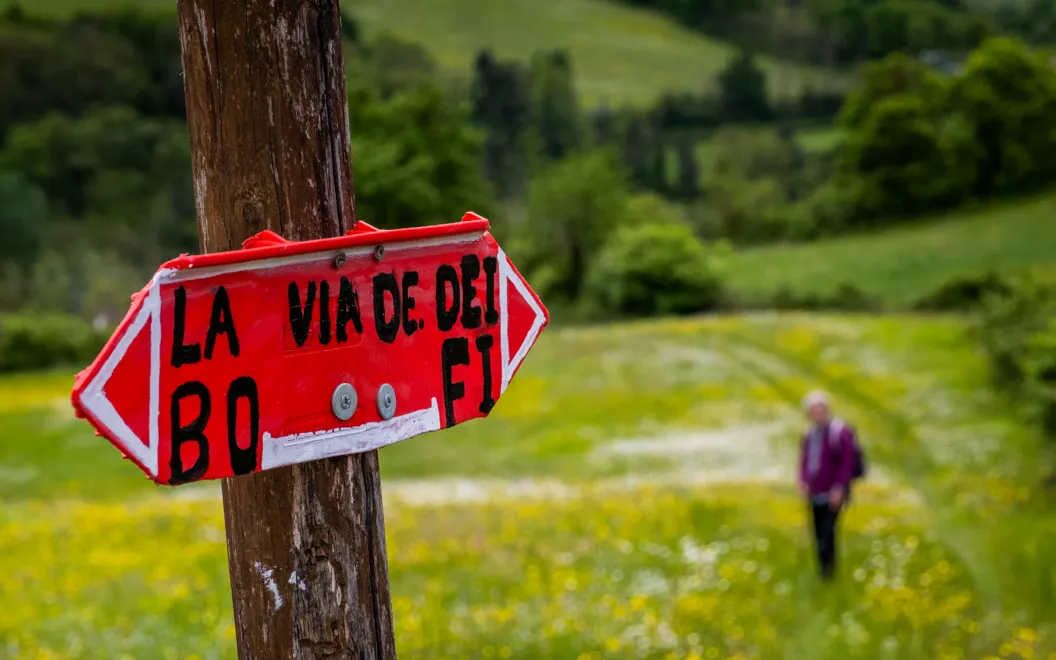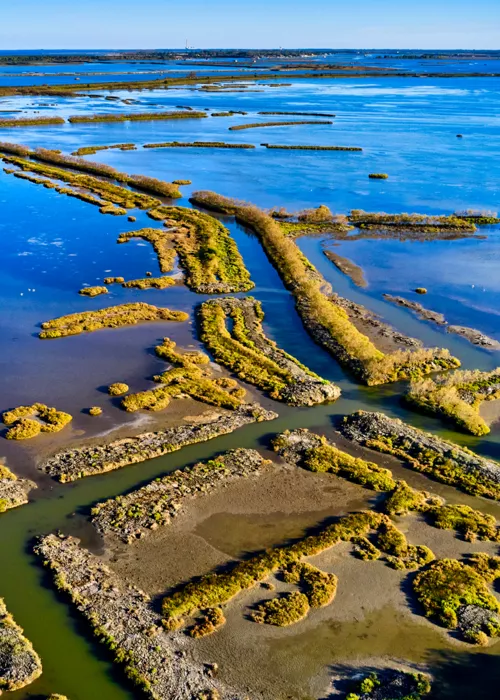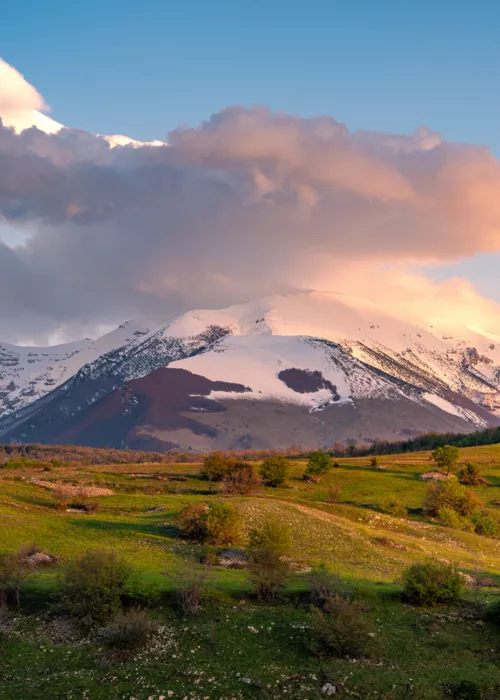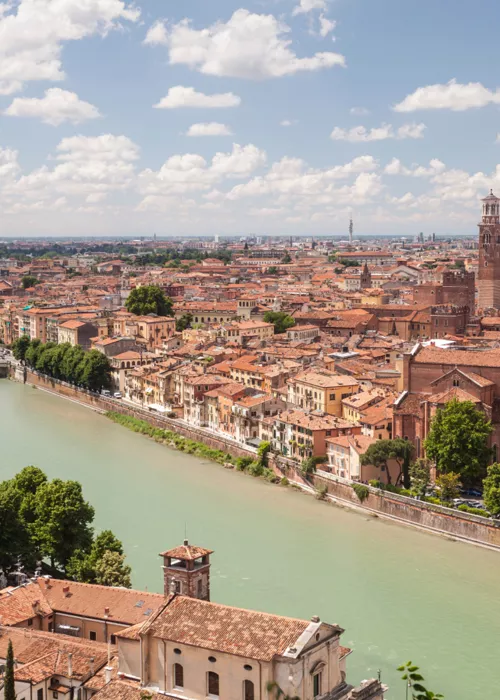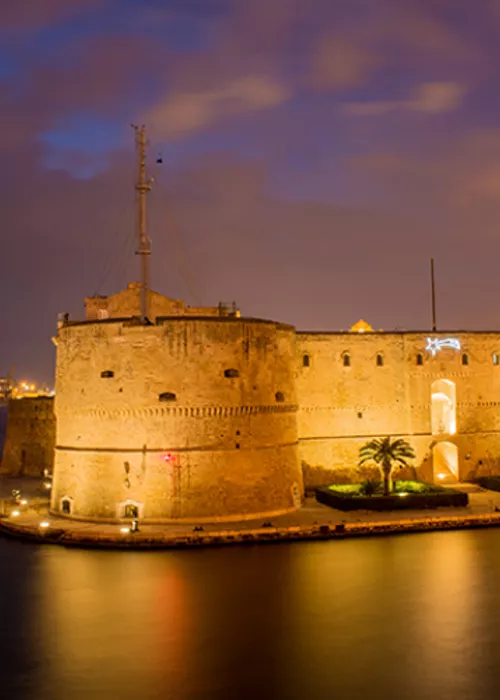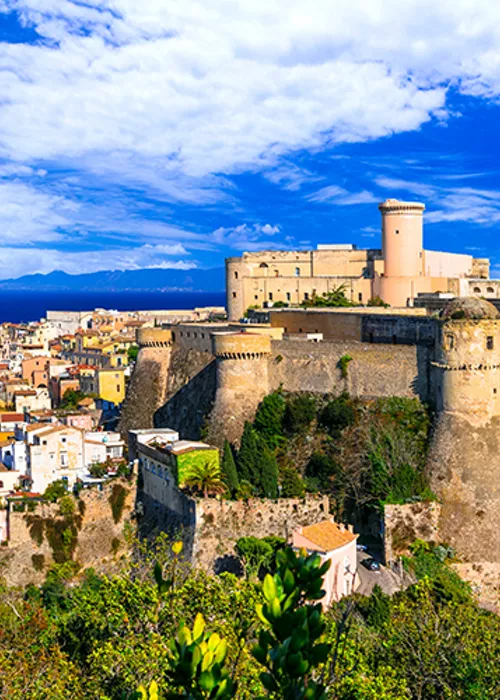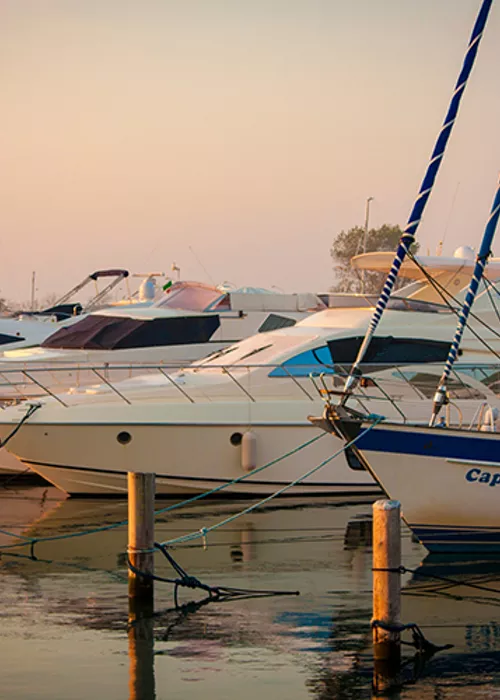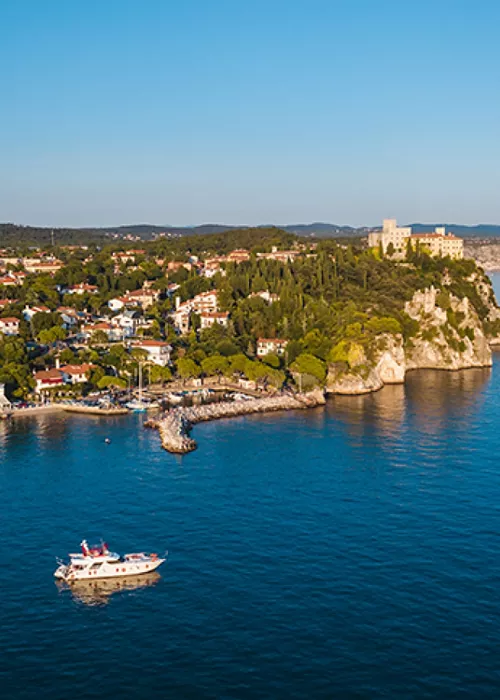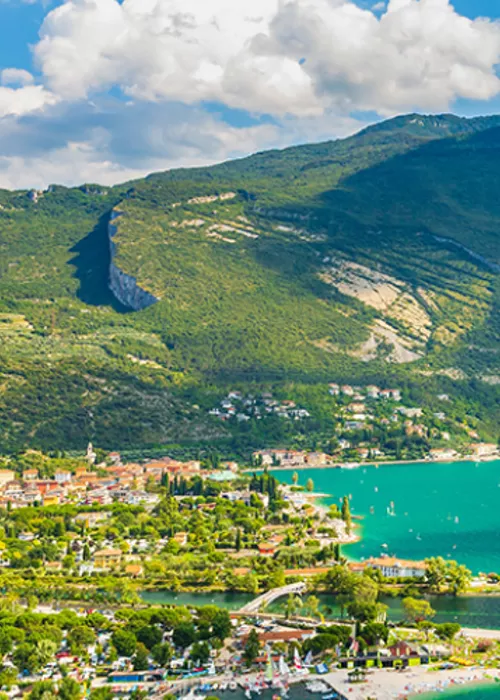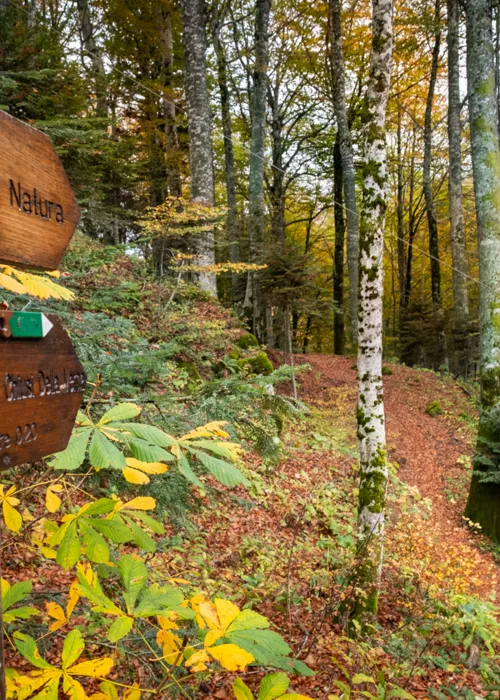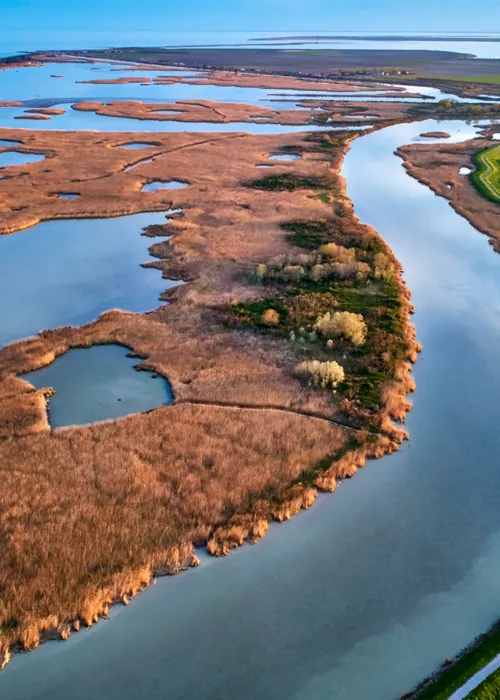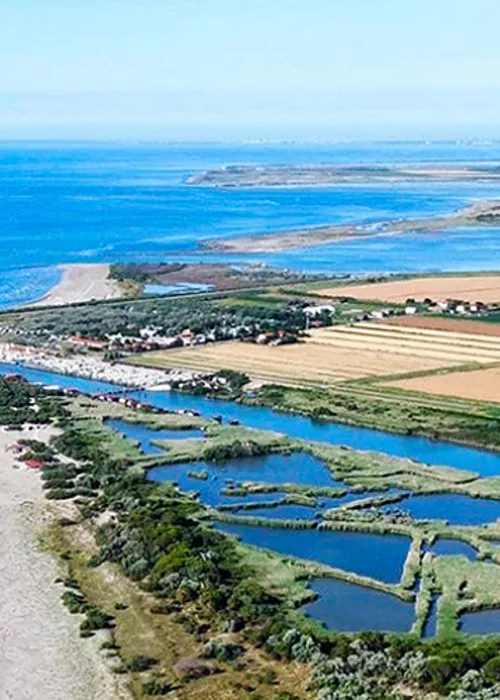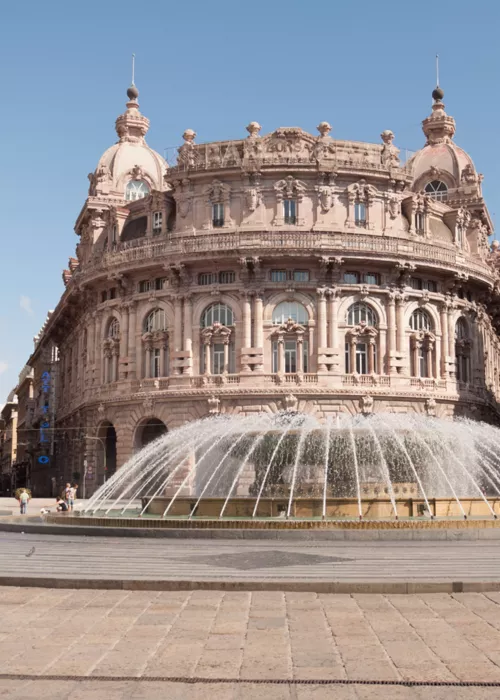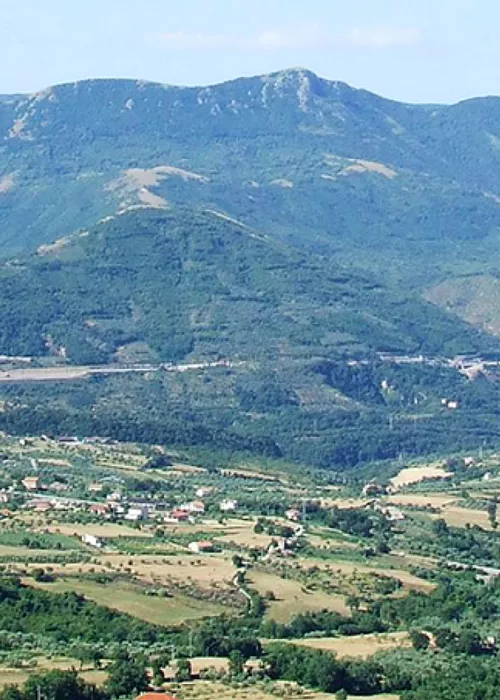From Bologna to Badolo

Bologna is a city of the right size, proportioned and easy, welcoming and kind, young, old and experimental. A city that is home to artists, singer-songwriters and intellectuals, where good living is evident from the outset. Start from Piazza Maggiore and reach, in just 498 steps, the Sanctuary of the Madonna di San Luca. From here you descend towards the Park of Chiusa di Casalecchio di Reno, the oldest hydraulic work in Europe still in operation, then we skirt the Rhine in the direction of Sasso Marconi reaching the San Gherardo Nature Oasis formed by the reclamation of a quarry near Palazzo de' Rossi and today a place for the protection and conservation of local flora and fauna.
Once you have passed the oasis, you will cross the Vizzano bridge suspended over the river and arrive at the Prati di Mugnano Natural Agricultural Park, a green area and reference point for out-of-town trips by the people of Bologna. After passing the meadows of Mugnano, the next point of interest you come to is the Nova Arbora Botanical Garden, with plants, fruit, flowers, the "poisonous garden" and an old farmstead offering accommodation and catering. Badolo is just a few minutes away, enhanced by the panorama and the broad walls of its fortress.
From Badolo to Madonna dei Fornelli

In Badolo, two hundred metres after the Hosteria della Rocca di Badolo, you will be able to see the intriguing Columbarium of Monte del Frate, a deep cavity with two large openings to the outside and many small niches carved by man. It is unclear what it was, whether an Etruscan-Roman burial site or a facility for breeding pigeons. We are at the Pliocene Foothills Nature Reserve, an area that bears witness to the existence of a small Pliocene marine gulf (five to two million years ago). On the rocks of this majestic sequence of cliffs or among the debris, fossil remains of organisms that used to inhabit this place can be found, mainly mollusc shells. This is the stage of the ascent to Monte Adone, which is somewhat of a symbol of this walk. Once you reach the summit and the two crosses, you can read the messages of walkers who have passed through here before you, and leave one for those to come in the walkers' notebook. You will find it in a metal box attached to the crosses. The landscape from here is truly a sight worth seeing.
After descending from Monte Adone, a long stretch connects Brento to Monterumici and then Monzuno, before continuing from the Sanctuary of the Madonna della Neve to Madonna dei Fornelli.
From Madonna dei Fornelli to Passo della Futa

In imperial Rome, it was probably a place for furnaces for cooking or baking. Then Madonna dei Fornelli, with its authentic and genuine spirit, became a holiday resort and today is a point of reference for those travelling the Via degli Dei. From this point, the third stage of the journey begins. The Flaminia Militare, the ancient route of the Roman legions (dated 187 BC), is easily recognisable in several sections, with a constant width of 2.40 m and an estimated 25 quintals of sandstone per metre. But this is also the portion of the path of the Piana degli Ossi, with the remains of six ancient furnaces possibly dating back to the 2nd century BC, and that of the Passo della Futa, a place of war and burials, the destination of this stage and the Apennine mountain pass between Emilia Romagna and Tuscany.
From the Futa Pass to San Piero a Sieve

The Passo della Futa is the place where, in 1944, the Germans built a kind of military citadel with forts equipped with gun turrets, artillery positions, shelters, observation points, an anti-tank ditch and minefields. Traces of it remain in the surroundings of Santa Lucia. In the 1960s, however, it became the burial place of almost 33,000 Germans, the largest of the twelve Germanic military cemeteries in Italy.
From the Pass, you cross a forest and then climb along the ridge of the hill to Monte Gazzaro until reaching its Cross, at 1125 m, near which is the box of the travellers' notebook of thoughts. Enter Mugello, a border land covered by the green of the Casentino Forests and that of the Apennines, the granary of the Medici, the home of Giotto and Beato Angelico and, in more recent times, that circuit which is so popular with Valentino Rossi.
The next interesting point on the route is the Passo dell'Osteria Bruciata, a name presumably due to the presence, as early as 1585, of a ruined building that, with the passage of time and popular rumours, became the building of horrors. It is said that, at an unspecified time, there was a tavern in this house where travellers and pilgrims would look for rest and food. But the innkeeper was an ogre who murdered his patrons and butchered their flesh to feed to the next passers-by. It was a friar who discovered the gruesome fact when, passing by, his nostrils were pervaded by a strange smell. He informed the relevant bodies, who caught the innkeeper in the act and set the tavern on fire.
Carrying on to Riarsiccio, an old ruined house, and then to a fork in the road. You can choose to reach Sant'Agata, an ancient and immovable village where you can visit the 12th-century Romanesque parish church of the 12th century and two museums, one of sacred art and the other of archaeology. The archaeological site of Montaccianico is nearby, where the castle of the Ubaldini family, rulers of the area, stood in the 13th and until the early decades of the 14th century. Or continue towards San Piero a Sieve, built during the Middle Ages around the bridge over the Sieve, rebuilt by the Florentines in 1372. Before reaching San Piero a Sieve, however, it is worth making a stop at the Convent of S. Bonaventura al Bosco ai Frati, which holds an expressive wooden Christ.
From San Piero a Sieve to Florence

Start again from the historic centre ofSan Piero a Sieve following the directions for the Medici fortress of San Martino, commissioned by Cosimo I De' Medici and erected in 1569, today closed to the public and visible only externally. Continue walking up the hill, following the lines of the cypress trees, looking at the stretches of olive trees and occasionally passing stone houses. Until you reach Trebbio and opt for the detour that leads to the Castello del Trebbio, Medici villa built between 1427 and 1436 by Michelozzo, commissioned by Cosimo il Vecchio.
Step by step, kilometre by kilometre, you will arrive at the impressive ruins of the Buonsollazzo Abbey, with a splendid view of Mugello and the Apennine ridge. The Convent of Montesenario, , built in 1234, is not far away. At an altitude of just over 800 metres, it is the right place for a short restorative stop and to taste the Gemma di abeto liqueur offered by the friars.
We follow a dirt road that runs alongside the Convent on the right, then the tree-lined avenue and a path that descends into the forest to Bivigliano, a village with accommodation and shops. From here we continue on an asphalted road to Summit of the Crosses. The last 18 km to the end of the Via degli Dei. One goes uphill towards Poggio Pratone, which offers a wonderful view of Florence. You then descend easily to Mount Fanna and, once you have passed the hamlet of Borgunto, you soon reach Fiesole, a charming little village secluded on a hill. Of Etruscan origin, the Renaissance villas, cypress avenues and gardens that adorn it make it a destination for pleasant walks away from the chaos of the city, while its archaeological area recounts its ancient past
And then from here reaching Florence is a piece of cake. The walk ends in Signoria Square, the political heart and fulcrum of local life since the communal era, an exceptional open-air museum. It is dominated by Old Palace, seat of the town hall and museum, and the 14th century Loggia dei Lanzi, an open-air gallery displaying Renaissance sculptures, including Giambologna's Rape of the Sabine Women (c. 1583), Benvenuto Cellini's bronze Perseus (1554) and Agnolo Gaddi's Seven Virtues (1384-89). All that remains is to take the customary photo at the destination and enjoy the sense of fulfilment that only a walk can give.


